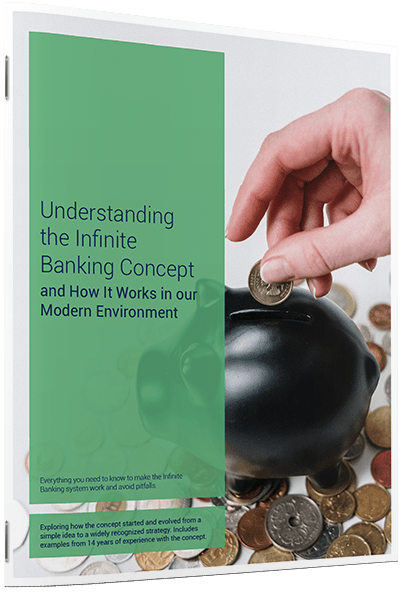702-660-7000
702-660-7000
George Clason, who wrote The Richest Man in Babylon, came up with the 10-20-70 Rule. In his book, he shares a story about an egg merchant who wanted to know the secret of the gold merchant’s success. The gold merchant was happy to share his secret because the egg merchant wasn’t asking for his gold directly. He gladly revealed how he acquired his gold so that the egg merchant could also achieve success.
1. Keep 10% of everything that you make or earn.
2. Only allow 20% of what you make or earn go to creditors.
3. Use 70% of everything you make or earn for living expenses:
Using the 10-20-70 Rule can be a smart strategy for generating free cash flow with participating whole life insurance (PWLI). PWLI is known for its ability to handle your money exceptionally well, even if you decide to leverage it for additional capital elsewhere.
Here’s how it works: Let’s say you allocate 10% of your income towards funding your PWLI. You can then borrow against your PWLI to settle a debt without sacrificing the growth your PWLI offers. Afterwards, instead of paying the creditor, you redirect those payments to yourself. You then repay the insurance company the amount borrowed, plus any interest they charged on the loan.
If the PWLI doesn’t require all the interest that was originally meant for your creditor but is now flowing back to you, you get to pocket that extra money (interest). This approach boosts your free cash flow, providing you with more flexibility in managing your finances.
If you don’t have any creditors, it means you’re not allocating 20% of your income to pay back loans. Instead, you can utilize that 20% to either fund your PWLI or invest it elsewhere. For instance, you might choose to use that money to cover your property taxes, finance your next vacation, or cover other living expenses that you’ve been covering with funds from your 70%.
By redirecting this 20% towards yourself, you can determine the repayment terms and schedule. You have the flexibility to set a high-interest rate, choose a comfortable payment mode, and even extend the payback period as long as you need. This autonomy allows you to save more effectively and manage your finances in a way that suits your needs and goals.
Here’s why this is a big deal for you.
Let’s say you lend yourself $10,000 with a 12% annual interest rate, intending to pay it back over 2 years. That means you’d be paying about $470.73 every month. By the end of those 24 months, you’ll have repaid yourself a total of $11,297.63. Essentially, you’ve structured your finances to save an additional $1,297.63 over the next two years, without really feeling a pinch in your lifestyle.
However, if paying $470.73 a month feels too tight for you, there’s a simple solution: extend the payback period. By stretching it to 4 years instead of 2, your monthly payments drop to just $263.34. And by doing this, you’re also ramping up your systematic savings from your 70%, accumulating a total of $2,640.24 over the next 4 years.
Here’s something to consider: instead of using that $10,000 to pay off a loan, you could invest it in another PWLI. If you set up the premiums on the new policy to be manageable for you, it could boost your free cash flow even more thanks to the internal growth it offers. However, there’s also the possibility of finding an investment with a higher return than a PWLI. If you do, you might decide that taking the risk to invest elsewhere is worth it.
The key concept behind the Perpetual Wealth Code™ is this: with a PWLI loan, you don’t have to rush to repay it like you would with a traditional loan. Since it’s an interest-only loan, you can use the money for longer, only paying the interest until you decide to pay off the loan. This flexibility in repayment gives you the chance to generate more free cash flow with that capital compared to immediately repaying the loan with both principal and interest.

Understanding the Infinite Banking Concept and How It Works In Our Modern Environment 31-page eBook from McFie Insurance Order here>
Looking back at the 10-20-70 rule: you keep 10%, allocate 20% to pay off creditors (which ideally should go towards your PWLI or yourself as soon as possible, because earning interest is more beneficial than saving it), and the remaining 70% covers your living expenses. These expenses might start off modest, like the ones mentioned earlier, but as you build up more free cash flow, they could expand to include things like:
The beauty of having extra free cash flow is that the possibilities are virtually endless. You have the freedom to use and control your money as you see fit. And here’s the great part: if you manage it wisely, you can sidestep many of the expenses like taxes, fees, penalties, and interest that come with not having enough cash flow to manage.
 57-page slide deck
57-page slide deckMany people are losing money with typical financial planning. Even people who were "set for life" are running out of money in retirement. Here's an easy guide with 3 things you can do to become wealthier.
Download here>
Whether you’re investing in new ventures, supporting causes you believe in, or simply enjoying a more comfortable lifestyle, having that extra cash flow opens up a world of opportunities. Plus, by avoiding unnecessary expenses, you can make your money work harder for you and build even more wealth over time. It’s all about smart management and strategic planning to make the most of your financial resources.
 Dr. Tomas P. McFie
Dr. Tomas P. McFie
Most Americans depend on Social Security for retirement income. Even when people think they’re saving money, taxes, fees, investment losses and market volatility take most of their money away. Tom McFie is the founder of McFie Insurance which helps people keep more of the money they make, so they can have financial peace of mind. His latest book, A Biblical Guide to Personal Finance, can be purchased here.